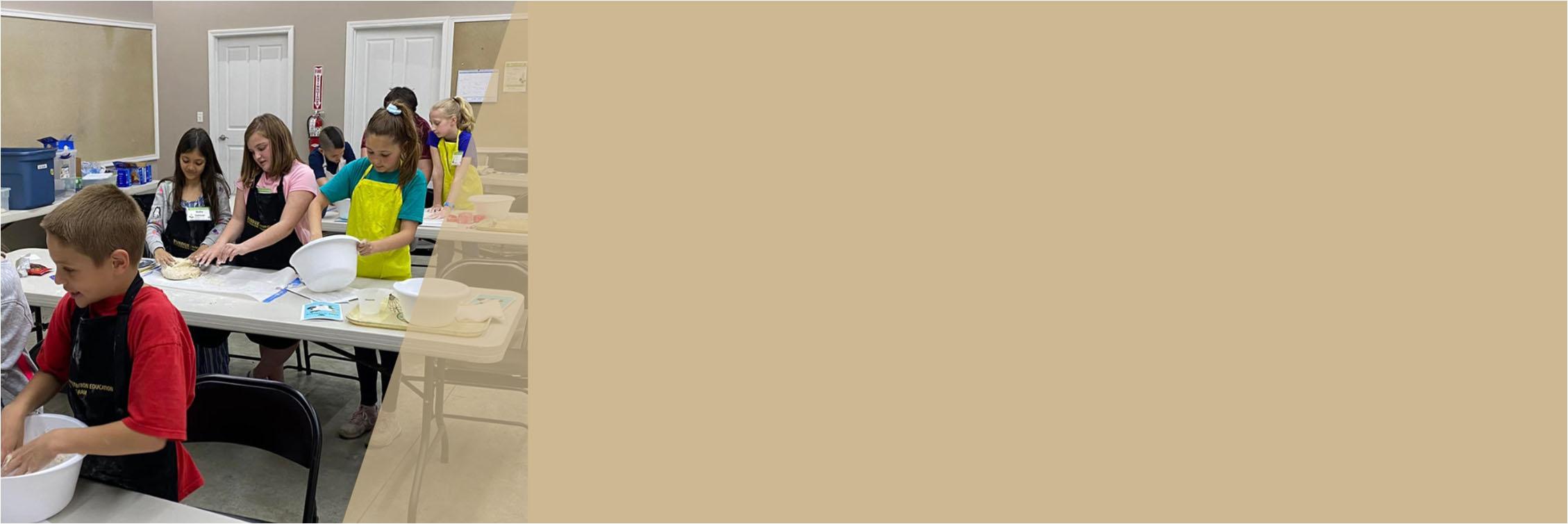
2 minute read
4-H Youth Development Success Story Chef University 4-H SPARK Club
Elementary Youth Develop Skills in Food Preparation and Healthy Living
Providing opportunities for youth in the kitchen encourages kids to try healthy foods which ultimately leads to a healthier lifestyle and reduction in childhood obesity. The American Heart Association suggests that children who learn to cook are likely to eat healthier as adults. Youth also have the opportunity to learn about different cultures through food. Teaching healthy living and cultural awareness in the kitchen is an issue in Jefferson County identified through informal needs assessments in our county's 4-H Expansion and Review Committee. Addressing this issue in our community highlights the 4-H program’s utility as an educational resource to funders, parents and members.
Advertisement
We utilized the 4-H Chef University curriculum to create a 4 session 4-H SPARK Club to increase membership and teach healthy living. We partnered with Rykers Ridge Volunteer Fire Department to use their facilities and utilized grant funding from Premier Ag Companies to purchase cooking utensils and ingredients so that teams of three would be able to each create recipes that they could take home after the two-hour session.
Sessions began with an Extension Educator demonstrating a kitchen safety topic such as knife safety, using measuring tools, kneading dough, cross contamination prevention and disinfecting surfaces etc. Next, the recipe would be modeled in the front of the class. Afterwards, the teams of three were released to their work stations to create their own recipes. While recipes where baking or setting, there would be a 20-minute physical activity. After the baking was done and while food was being tasted, an Extension Educator would lead a discussion on MyPlate and what parts of MyPlate where represented in the meal and what cultures were represented in the dish. There were 4, 2-hour sessions for a total of 8 education hours. The Extension Educators were joined by 5 4-H Volunteers to help supervise the use of knifes, ovens and other kitchen utensils. Dishes created included whole wheat pretzels (grains), veggie frittatas (proteins), pesto pizza (vegetables), fruit salsa (fruits), and a celebration cake on the last day to highlight eating desserts in moderation.
Looking Forward
We plan to repeat this program for a third time this spring. Contact educators if you are interested in this program.
Impact
4-H Common Measures 2.0: Healthy Eating & Food Preparation was administered to collect impact.
We had 21 youth complete the program. Participation was limited due to kitchen safety.
Most youth (76.5%) reported they learned about healthy food choices at 4-H, and over three-quarters (81.3%) have given their family ideas for healthy meals or snacks.
Youth reported on a 3-point scale (1=No, 2=Sort of, and 3=Yes) that they were knowledgeable about how to: handle hot pots and pans safely (3.00) and keep your cooking area clean to stop spreading germs (3.00).
Ten indicated this was their first 4-H activity.
Youth indicated for future 4-H participation, they would like to meet in person about the same topic(75.0%).








